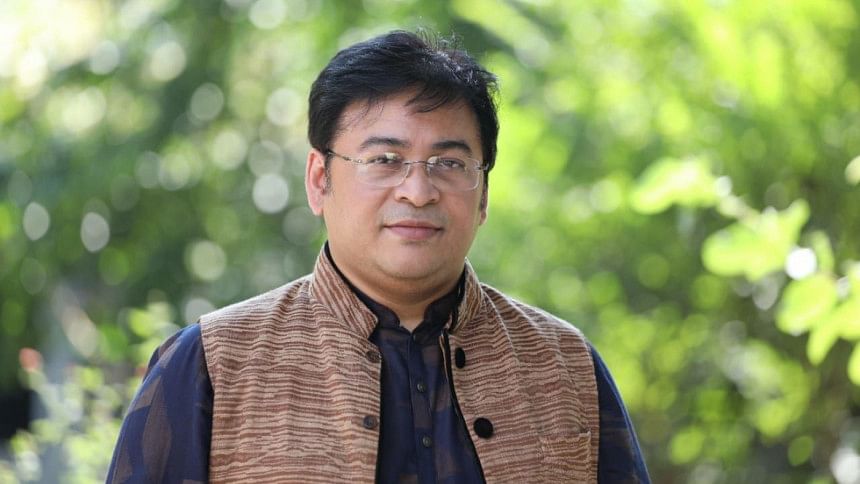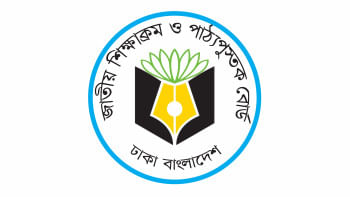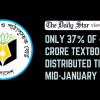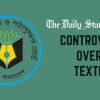‘Textbooks cannot be made completely error-proof’

Dr M Tariq Ahsan, professor at the Institute of Education and Research of Dhaka University and member of the National Curriculum Development and Revision Core Committee, discusses the newly launched curriculum for Classes 6 and 7 that has sparked much debate and controversy, in an interview with Md Shahnawaz Khan Chandan of The Daily Star.
Why was this new curriculum necessary?
Various studies, including those conducted by our government, have revealed that our students have been failing to achieve competencies corresponding to their grades. Only 25 percent of students can achieve the expected competencies after completing primary education in Bangladesh. The situation is similar in secondary education too. This happened because our previous curriculum and the evaluation system were entirely knowledge-focused. In 2017, the National Curriculum and Textbook Board (NCTB) conducted a situation analysis of our primary and secondary education systems, where we looked into the needs for a new curriculum, mistakes in the previous curriculum development processes, and the ways to mitigate the challenges. Then we reviewed different international research to understand the global trend of curriculum reform. In one of the studies, we found that 52 out of 102 countries reviewed reformed their school curricula and adopted competency-based curricula.
Why is the new curriculum called "competency-based"? How will teachers evaluate the competency level of students?
In a competency-based curriculum, students from pre-primary grades to Class 12 will acquire specific sets of competencies instead of memorising answers to questions. We have introduced a 360-degree assessment in this curriculum. In the previous curriculum, teachers were given the sole authority to assess a student. Now, subject teachers will not be the only evaluators. Learners will have to achieve specific competencies by doing a range of activities in the classroom, at home and even in their own communities. Parents, peers, community members – whoever has any role in helping the learners to acquire a certain competency – will take part in the evaluation process.
This curriculum has introduced evaluation rubrics and performance indicators for student assessment. There will be no scoring or grading system; instead, the students' competency level will be assessed through qualitative description such as "beginner's level," "intermediary level" or "advanced level."
Consistency and interlinks among the competencies have also been maintained to eradicate any chances of bias. Suppose a student studies six subjects in a certain grade. While studying these subjects, they will acquire some common or related competencies – for example, linguistics. This competency will improve their performance both in literature and social science. Now, if one subject teacher is biased and gives poor or better comments for this specific competency, the learner's achievements in the same competency in another subject will reveal said bias.
To ensure reliability and transparency, the whole evaluation system will be managed through an app, a raw version of which has already been used successfully in the piloting of the curriculum. Through this app, students' progress in acquiring competencies and their evaluation can be tracked.
It is said that this curriculum will reduce dependency on coaching centres and guidebooks. How?
Abolishing the scoring system will ensure there is no competition among the students; instead, there will be collaboration to achieve certain skills. As there will be no competition, students will not be interested in going to coaching centres and using guidebooks. This curriculum has focused mostly on formative assessment, which means monitoring students' progress will be a continuous, ongoing process. Every day, students will be given feedback to develop their performances. There will be two terminal exams as well, but students will not write memorised answers in those exams. They will solve unique problems related to their competencies. There will be no public exams before Class 10. We are working to develop a new structure of public examinations as well.
Why are there so many mistakes in the textbooks?
Our school curriculum has undergone a radical and comprehensive transformation. Some of our authors probably could not cope with this level of change. Besides, the pandemic hampered this process; many of our training sessions and material review had to be conducted online.
There are two aspects of the errors in the textbooks. Some errors occurred due to the authors' and editors' negligence – for instance, the much discussed allegation of plagiarism. Meanwhile, some errors may have been left intentionally. Although textbooks were reviewed several times by the editors and external experts before publishing, we cannot say that it's impossible to leave intentional errors in the textbooks. Our education minister has formed a committee to investigate whether errors were left intentionally or not. An expert committee has also been formed to review the books to find all the mistakes and suggest corrections. The corrected versions of the textbooks will be delivered to the teachers as soon as possible. The corrected books will also be made available on the website for the public, so that we can publish a final, refined version of the textbooks in 2024.
Does the NCTB have enough resources to identify the mistakes, correct them, and distribute so many books within a short time?
Textbooks cannot be made completely error-proof. So, we need to think about how quickly and efficiently we can remove the errors and print the corrected versions. Steps have already been taken to strengthen our author and editorial panel for the next batch of textbooks. As you know, we have published textbooks for only two grades this year. We want to learn from our mistakes and deliver improved material in the future.
We should also consider the NCTB's capacity. Every year, the board has to complete the mammoth task of printing, publishing and distributing more than 350 million books. As a result, it cannot focus on more important issues such as monitoring the implementation of curriculum, enhancing teachers' performance, enhancing the quality of materials, etc. Textbooks could easily be completed by outsourced service providers, which is a common practice around the world.
How are teachers and education officials being trained for the new curriculum? There are allegations that the ongoing training is inadequate.
Those who are saying so are not aware of the full package of our training programme. Not only the teachers, but all the relevant officials and other stakeholders will also receive training on several segments, such as curriculum framework, subject-wise training, and a five-day, in-person training. Besides, there are mentoring teams in every upazila who will help the teachers follow the new curriculum. There is also a written guideline on how to use the curriculum and the textbooks. All the training materials, videos and other resources are available online. There will be a refreshers' training for all newly recruited teachers and educational administrators as well.
Are you getting sufficient government support for the implementation process?
The government has been providing tremendous support. The finance ministry has approved Tk 600 crore just to conduct the ongoing training programme. We are collaborating with Amazon for technological solutions and database management. In the next two years, our officials will develop the necessary skills through this collaboration, to manage the huge amount of school-based data.
We need to keep in mind that we will be able to benefit from the demographic dividend for at most 20-25 years. If we cannot transform our young generation into skilled manpower within this period, we will not be able to keep pace with the Fourth Industrial Revolution.

 For all latest news, follow The Daily Star's Google News channel.
For all latest news, follow The Daily Star's Google News channel. 












Comments